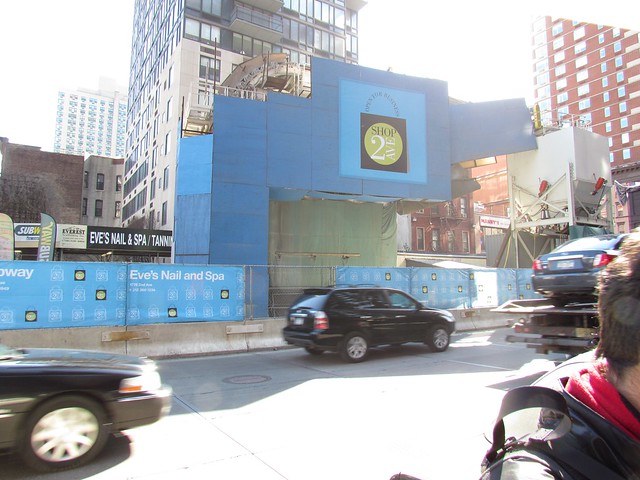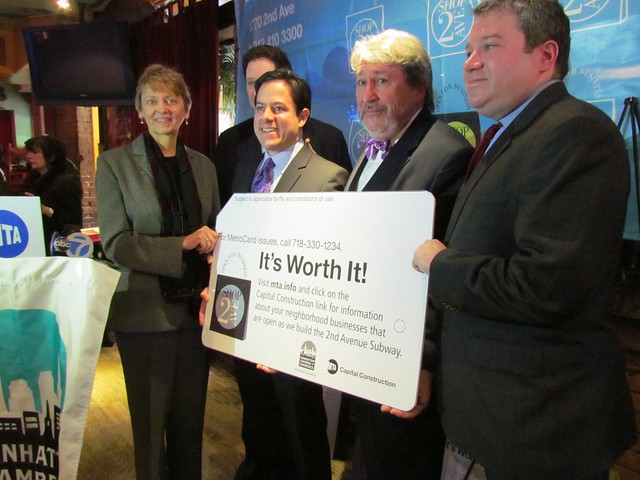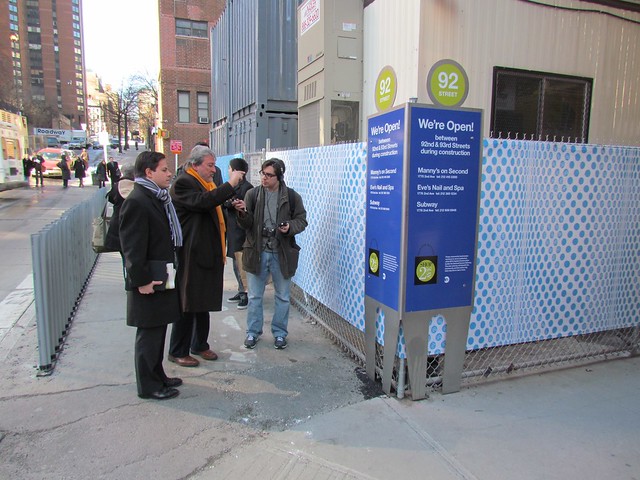Handing policymakers numbers without contextualizing them often leads to Very, Very Bad Ideas from policymakers. For instance, if I told someone that 90 people were struck by subway trains in 2009, that person might be surprised. After all, 90 seems like a good number, and the 40 people who died from the impact represent tragic deaths indeed.
But what if I said 0.000006 percent of all subway riders were struck by trains in 2009? Would your response be to propose a measure that would add 20 minutes to a trip from Coney Island to Midtown? Or 12 minutes for those who ride the D from the Bronx to Herald Square? As Pete Donohue explores in his column today, that’s what one Assembly representative has done.
Dononhue writes of this Very, Very Bad Idea:
Commuting by rickshaw would be faster than the subway under a Bronx assemblyman’s proposal to increase straphanger safety.
Before entering each and every station on the line, a train would have to come to a complete halt just shy of the platform. Only after a required pause could the train move forward to pick up passengers. The maximum permitted speed when entering would be 5 mph.
The regulation by Democratic Assemblyman Marcos Crespo – introduced in the Legislature last week – would achieve its goal: preventing people from getting hit by arriving trains.
The bill — labeled A04796 in the Assembly — is available here, and Crespo’s justifications defy logic. He seems to think that 155 injuries over three years as well as liability of between $30-$60 million a year is rationale enough for this move. Crespo wants trains to come to a complete stop while drivers — he says conductors, but the drivers would do it — inspect the tracks for people before moving ahead very slowly. The cost in lost productivity due to slower commutes alone would wipe out the savings in human life and liability payments.
Donohue believes that Crespo’s “heart is in the right place” and claims that personal accidents are “harsh realities of the subway that are either routinely ignored or quickly dismissed as unavoidable.” From the perspective of the personal, perhaps Donohue is on target, but the numbers don’t support this sentimentality. Exceedingly few people are struck by subway trains every year, and even fewer die from those accidents. In a traditional model of economic efficiency, It’s not worth robbing the subway of speed to save a handful of lives.
Where Donohue hits the nail on the head though is in his attacks against those who slammed the MTA for requesting information about platforms doors. Crespo claims that it is “unlikely the MTA will incur that expense” of installing the new technology. He seemingly ignores the MTA’s proposal that someone else foot the bill for the platform doors and doesn’t know or pay attention to the difference between the authority’s operating and capital budgets.
As I noted a few weeks ago, critics who blasted the MTA’s Request for Information were barking up the wrong tree. Donohue, who notes that at least one company — Crown Infrastructure — is interested in the MTA’s proposal, agrees. “You would think” based on the reaction, he says, “subway executives had expressed an interest in building a space shuttle from the sharp criticism that emerged.”
Citing the high cost of fires caused by track debris and the safety benefits, Donohue says the authority “should test platform doors in a pilot program and not be rattled by critics.” I have no qualms with that claim, but we should not overstate platform dangers either. One train may hit one person every four days on average, but that represents one six-millionth of one percent of all subway riders. The city would suffer tremendous were slower subways the price the other 99.999994 percent would bear in the name of false security.






















